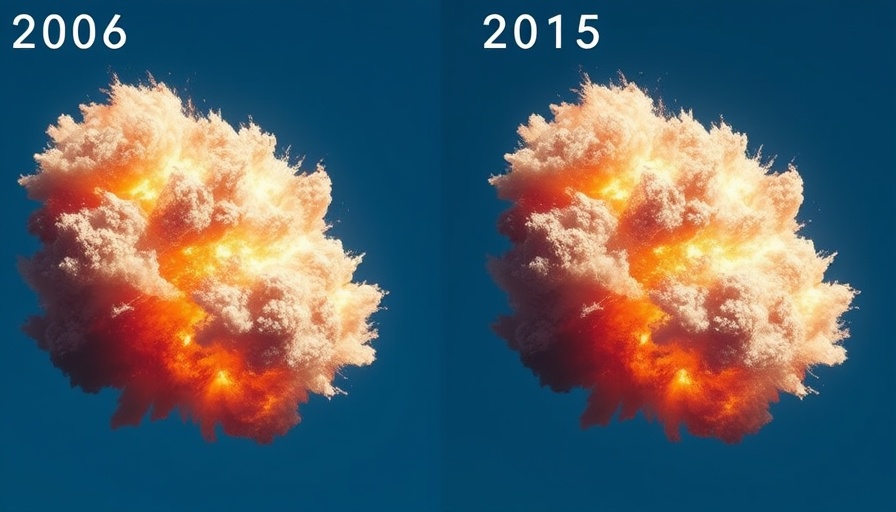
Revolutionizing Simulations: The Impact of Breakthrough Techniques
In the realm of computer graphics and simulation, the challenge of creating high-resolution images of complex phenomena has long been a pursuit of scientists and technologists. Recent developments have culminated in a remarkable new simulation technique that can generate incredibly detailed results without the need for artificial intelligence. Instead, this innovation utilizes an intelligent combination of grid and particle methods to efficiently simulate scenarios that once seemed unattainable, such as asteroid impacts and fluid dynamics.
In 'No AI Needed - 1,000,000,000 Particle Asteroid Crash Simulation! But How?', the discussion dives into advanced simulation techniques, exploring key insights that sparked deeper analysis on our end.
Understanding the Technique: A Marriage of Grids and Particles
The newly developed method integrates adaptive grids with adaptive particles, a significant leap forward from previous techniques. This approach addresses the limitations of fixed grids that require immense computational resources when scaled to larger areas. Instead, particles can be deployed wherever needed, allowing for a much more efficient simulation process. This is akin to placing streetlights only along busy sidewalks instead of lighting an entire block. Such efficiency means that high-resolution simulations can now be rendered in just minutes per frame on a standard workstation.
Why This Matters to Business Owners
The shift towards faster and more realistic simulations carries profound implications for businesses across various sectors—from gaming and film production to engineering and architecture. High-fidelity visualizations can significantly enhance project accuracy, marketing strategies, and user engagement. Consider the filmmaking industry, where the ability to simulate natural disasters or complex action scenes with a fraction of the processing time can lead to lower production costs and more creative freedom.
Drawing Comparison: Previous Techniques vs. Current Innovations
Traditionally, high-resolution simulations demanded extensive resources and time, often relegating such tasks to large computing clusters. Previous research, particularly the acclaimed Wavelet Turbulence paper, established foundational techniques but struggled with grid constraints. The current innovation simplifies this process by ensuring that computational power is only directed toward areas with substantial activity, leading to a more sustainable and scalable solution that positions companies to adapt rapidly to changes in project scope.
Future Trends: What Lies Ahead
As technology evolves, simulations will likely continue to push boundaries. With the potential integration of GPU acceleration and enhancements in algorithm efficiency, the future may hold real-time rendering capabilities. Think of a world where designers can instantly visualize the impact of changes to a project, creating a dynamic feedback loop that allows for more fluid and collaborative planning processes.
A Call for Collaboration and Innovation
The innovative spirit highlighted in this research exemplifies the power of human ingenuity over artificial intelligence. As business owners, it is crucial to remain at the forefront of these advancements, embracing new tools and strategies that allow you to harness cutting-edge technologies for your advantage. The intersection of simulation technology with practical application stands to redefine industry standards and expectations.
As the landscape of computational simulations changes, now is the time to get AI working for you today. By leveraging these advancements, your business can achieve unprecedented levels of creativity, efficiency, and accuracy in project execution.
 Add Row
Add Row  Add
Add 




Write A Comment